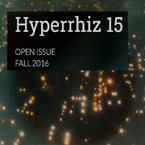Remembering the Dead
Remembering the Dead
 Remembering the Dead is
a memorial to victims of mass shootings across America, 1880s-present. Names are displayed on a computer screen, along with age, date and place of death. Concurrently, each victim's name is spoken aloud. Each name is added to the ever growing memorial wall in the screen's background. The intent is to highlight the loss of human life by gun homicide and promote realistic solutions to this and other forms of violence.
Remembering the Dead is
a memorial to victims of mass shootings across America, 1880s-present. Names are displayed on a computer screen, along with age, date and place of death. Concurrently, each victim's name is spoken aloud. Each name is added to the ever growing memorial wall in the screen's background. The intent is to highlight the loss of human life by gun homicide and promote realistic solutions to this and other forms of violence.
Remembering the Dead is available for gallery exhibition. LEARN more about the logistics.
Exhibitions
International Conference on Interactive Digital Storytelling
Juried exhibition, international
Snowbird Ski & Summer Resort
Little Cottonwood Canyon, UT
20-23 November 2019
Curated by Ryan Bown and Brian Salisbury
Exhibition in conjunction with ICIDS 2019 conference following its theme "The Expression of Emotion in Humans and Technology." International Conference on Interactive Digital Storytelling (ICIDS) is the premier conference for theory and practice focused on digital interactive forms of narrative from a variety of perspectives. Artist description/statement for ICIDS 2019 exhibition.
 iDEAS 2017: Art and Inclusivity
in the Digital Age
iDEAS 2017: Art and Inclusivity
in the Digital Age
Juried exhibition, international
The University of the District of Columbia, Washington, D.C.
06-07 October 2017
Curated by Dena Eber and Jon Malis
Exhibition in conjunction with the the International Digital Media and Arts Association
(iDMAa) conference. iDMAa serves educators, practitioners, scholars, and organizations with
interests in digital media.
 "Ses souvenir des mortes"
"Ses souvenir des mortes"
bleuOrange: Revue de Littérature Hypermédiatique 09 December 2016
Peer reviewed publication, international
Myriam Watthee-Delmotte, Brussels, Belgium, wrote, in her editorial, that the work evokes respect for those killed by gun violence, and that such work is necessary in our contemporary society. Full text, in English.
 Hyperrhiz 15
Hyperrhiz 15
Juried exhibition, international
Fall 2016-Present
Hyperrhiz is an international, peer reviewed online journal specializing in new
media criticism and electronic literature.
 Boomerang Gallery
Boomerang Gallery
Invited exhibition, local
Vancouver, Washington
17-18 November 2016
 You/I: User Interfaces & Reader
Experience
You/I: User Interfaces & Reader
Experience
Paul Watkins Gallery
Invited exhibition, international
Winona State University, Winona, Minnesota
22 September - 14 October 2016
Curated by Dene Grigar
Nine invited works, each expressing unique ways interfaces can impact reader experience and the relationship readers have with the stories told through them.
 Garden of Reflection Gallery
Garden of Reflection Gallery
Juried exhibition, international
Irish Sound Science and Technology Association International
Festival and Conference on Sound in the Arts, Science and Technology
Derry/Londonderry, Northern Ireland
7-9 September 2016
Background
Remembering the Dead is a memorial to victims of mass shootings across America from the 1800s to present day. It is updated as often as mass shootings occur.
Description
Remembering the Dead is a sound installation, available in browser and physical contexts. The browser context uses a computer with web browser, monitor, and sound system to display the work, drawing from a dedicated website maintained by the artist. The physical context consists of a bespoke wooden cabinet, representative of both a bullet and a tombstone. A monitor rests in a bed of empty bullet casings at the top of the cabinet. Inside the cabinet is a computer and sound system.
In either context, victims' names, ages, places of death, and dates of death are displayed on the monitor. Concurrently, using text-to-speech technology, the name of each victim is spoken. After its display, the name of each victim is added to a memorial list in the monitor's background. Another name is displayed and spoken. The process continues, eternally. With each name displayed, the list grows longer. The intent of the work is to remind viewers of the human cost of gun violence, to make immediately and viscerally clear that people continue to die in barrages of bullets, and to promote meaningful social and civic justice to stop the killings.
Metadata
Object: Multimedia memorial
Format: Sound installation, contextualized in website and physical installation
Bit Rate: 352kbs
Duration: Perpetual
Name: Remembering the Dead
Created: Begun 2015, continues to present
Conceptual design: John F. Barber
Coding: Greg Philbrook
Cabinetry: Jim Boesel
Cited by Others
Gervais, Bertrand. "Ritualités Numériques: Les Murs des Trépassés. Deuils et Mémoriaux en Culture de L'écran," Rite et Création, edited by Myriam Watthee-Delmotte, éditions Hermann, 2020, pp. 185-199.
Watthee-Delmotte, Myriam. Performativité et ritualité du deuil dans léart numérique: une formalisation de la temporalité. OIC [Observatoire de léimaginaire contemporain], 26 May 2017.
Watthee-Delmotte, Myriam. "La création hypermédiatique: des ritualités alternatives pour gérer les morts violentes." bleuOrange: Revue de Littérature Hypermédiatique, 9 Dec. 2016. English translation.
Press
Hewitt, Scott. "Enduring Rememberance." The Columbian, 8 Jan. 2017, p.
D6.
Available online as WSUV
Teacher Creates Cyberspace Memorial for Gun Violence Victims. The
Columbian, 8 Jan. 2017.
Iterations
Remembering the Dead: Mass Shootings
Archival web site
The current version of this work. Remembers and recalls victims of mass shootings across the
country.
Remembering the Dead: 2015
Archival web site
The original iteration of this project. Remembers and recalls victims of gun homicides,
including mass shootings, during 2015. Inspired by a mass shooting on 1 October 2015 where
ten people were shot and killed at Umpqua Community College in Roseburg, Oregon.
Remembering the Dead: 2015 (French translation)
Archival web site
The original work, in French translation, as "Ses
souvenir des mortes." bleuOrange: Revue de Littérature
Hypermédiatique 09 December 2016. Myriam Watthee-Delmotte, Brussels,
Belgium, wrote, in her editorial, that the work evokes respect for those killed by gun
violence, and that such work is necessary in our contemporary society. Full text, in English.
Remembering the Dead: Northern Ireland
Archival web site
Remembers and recalls the nearly 3,600 men, women, and children killed during the Troubles
(also known as the Northern Ireland Conflict), a violent political conflict focused on the
constitutional status of Northern Ireland, late 1960s-early 2000s. The conflict was focused
primarily in Northern Ireland, but spilled over into parts of the Republic of Ireland,
England, and Europe. LEARN more.
Responses
O Absalom! Central to our act of faithful memory is the naming of the dead. John
Barber's Remembering the Dead: Northern Ireland recites the full list from
the Time of Troubles. Each name is then recorded on the screen, making a carpet of
permanence in the darkness. A powerful and stunning piece.
— M.D. Coverley
(author of Califia and Egypt: The Book of Going Forth by Day)
Having experienced The Troubles, on its republican edge throughout my childhood, John
Barber's work more than resonates with me. It is sensitive and heartfelt, and obviously
truth and love (or their absence) are at the core of all these lived things. Any writer
listening for the dead to speak, can only hear them with an open heart. John Barber has
such a heart, and it beats authentically throughout his work Remembering the
Dead as he catalogues the horrific human loss of The Troubles in Northern
Ireland.
— Michael J. Maguire
(author of Promise and Bob Casio's Dead Cameraman)
Conceptual Framework
Mass shootings are defined by the U.S. Federal Bureau of Investigation (FBI) as gun-related incidents with four or more victims killed, not including the perpetrator. [1]
Quickly Forgotten
Following mass shootings there is brief outrage that innocent people are killed while living
their daily lives. But, the focus quickly shifts away. Why? Perhaps we have grown calloused
about gun homicides. They happen daily. Dead people, after all, cannot provide much news, so
media focus shifts to the motivation, mental state, or ideology of the perpetrator(s).
Inquiries or protests are brushed aside by passionate interpretations of the United States
Constitution led by a very powerful lobbying organization and its cadre of purchased
politicians. Perhaps mass shootings provide too chilling a reminder that life, and its many
aspirations and activities, can end quickly, brutally. Perhaps the deaths of thousands of
people each year through gun violence seems, somehow, surreal, distant, and impersonal. As
result, victims of mass shootings are quickly forgotten.
What was the initial motivation for this work?
I admit to not giving a lot of thought to mass shootings. They were distant, removed from my
life. But, on 1 October 2015, ten people were shot and killed at Umpqua Community College in
Roseburg, Oregon. I teach at a university in Washington state, close enough that the local
news media sent reporters to the scene. Certainly it was close enough to make me think,
"What if this happened on my campus and the people killed where people I knew, or with whom
my life intersected? What had I missed by not paying attention?"
Following the mass shooting at Umpqua Community College, I felt compelled to make some response, to bear witness to the deaths. I conceptualized Remembering the Dead as a work that would remember and recall the victims by displaying their names and other information on computer screens. I began with the names of victims of the Umpqua Community College mass shooting, but quickly decided to bear witness to all people around the country killed in gun homicides in 2015. Through this effort, I hoped to increase awareness, and prompt others to speak out against the continued violence and loss of humanity.
Changes
Nearly two years later, while exhibiting Remembering the Dead at an
international exhibition in Washington, D.C., I changed the focus of this work. At the time,
the horror of another mass shooting, this one at the Route 91 Harvest Festival in Las Vegas,
Nevada, was not yet a week old. I realized that as I had been inspired by the mass shooting
at Umpqua Community College to begin the work, I was now inspired by another mass shooting
to focus the work. Instead of trying to collect and curate information about every gun
homicide victim, I would concentrate on victims of mass shootings.
This change in focus was not meant as disrespect for all the other gun homicide victims. Instead, I felt the shift in focus could help to draw attention to the now prevalent reality throughout our nation that anyone, anywhere, anytime could be a mass shooting victim. Whether in a shopping mall, a church, a school, a business, or an entertainment venue, people are targets.
The original work is now called Remembering the Dead: 2015, given its focus to recall the victims of gun homicides in 2015. The new iteration of Remembering the Dead recalls the victims of mass shootings by displaying and speaking their names as part of an ongoing, and unfortunately, continually updated memorial.
Influences
In conceptualizing Remembering the Dead, I was inspired by Ray Bradbury, George
Bush, Jr., Jacque Derrida, and two kinds of death, physical and memory.
In his novel Fahrenheit 451, Ray Bradbury describes a dystopian future where books are outlawed and burned. People memorize and recite entire books so that their ideas will not be lost.
A similar commitment was suggested in response to the ban by President George W. Bush, Jr.'s administration and the U.S. Department of Defense against photographing coffins of those killed in Operation Iraqi Freedom, The Iraq War, 2003-2010, in which more than 4,000 U.S. troops were killed.
In 2004, the Seattle Times published the first photograph taken of coffins of soldiers killed in Iraq being shipped back to the United States. Tami Silico, a female military contractor, took the photograph at an airport in Kuwait. When published, her photograph sparked a national debate over whether not showing images of Iraq War dead manipulated public opinion or protected family privacy. Tami Silicio's Official Website provides a copy of her photograph, as well as information about its provenance and impact.
The ban on photographs of coffins was overturned in December 2009. During this time, I recall a blog post that encouraged each citizen to memorize the names of three individuals killed in Iraq and use them whenever possible. Those killed would not be forgotten. Jacob H. Allcott . . . Alessandro Carbonaro . . . David J. Grames Sanchez . . .
Jacque Derrida says, "I am always overwhelmed when I hear the voice of someone who is dead, as I am not when I see an image or a photograph of the dead person. . . . I can also be touched, presently, by the recorded speech of someone who is dead. I can, here and now, be affected by a voice from beyond the grave. . . . A miracle of technology" (Derrida 2001, 70-72).
As to why this is so, Derrida explains, "[Recording] is reproduction as re-production [emphasis in original], of life itself, and the production is archived as the source, not as an image. . . . Life itself can be archived and spectralized in its self-affection, because one knows that when someone speaks he affects himself, whereas when someone presents himself to be seen he does not necessarily see himself. In the voice, self-affection itself is (supposedly) recorded and communicated. And this supposition forms the essential thread of our listening" (Derrida 2001, 71).
Extrapolating Martin Heidegger's concept of Dasien, or human existence as involvement with a world of objects, Derrida says what matters is the hearing [his emphasis] of the voice for "this hearing could not open Dasein for 'its ownmost potentiality-for-Being,' if hearing were not first the hearing of this voice, the exemplary metonymy of the friend that each Dasein bears close itself" (Heidegger 1962; Derrida 1993, 164).
There is much to unpack in these statements, but we might summarize them thus: Through recordings, past events and people are no longer spectral voices. They come to life, to presence, to the present. There is perhaps no more fundamental vocal self-affection than for one to speak his or her name. We can be affected by vocal recordings of those dead or radically absent. In their absence, we can speak the names of the dead, creating connection and remembrance. Such recordings can touch us in the present, as a voice from beyond the grave (Derrida 2001, 70-72).
Remembering the Dead also draws from two concepts of death: physical and memory. With physical death the body ceases to function; the person is no longer among the living. With memory death, when survivors no longer remember the deceased, that person no longer exists. Respite from memory death is sought through community service, creative works, and family descendants, something to evoke the name of the dead among the living. Through such endeavors, the deceased goes forward in time. As long as we remember the names of the dead, we remember their loss and sacrifice.
By speaking the names of mass shooting victims, Remembering the Dead speaks to what is lost to gun homicides in America: humanity, lives, achievements, dreams, and aspirations of sons and daughters, mothers, fathers, wives, husbands, friends, sisters, brothers, cousins, aunts, uncles, nieces, nephews, grandsons and granddaughters, grandmothers and grandfathers. [2]
Fit Within Larger Notion of Aesthetics
Physical memorials to victims of wars, natural disasters, accidents, or natural causes
commonly display the names of those who died. These memorials are designed to create
conceptual and social spaces in which the living can recall and reflect upon the dead. Such
memorials must be visited in person, however, and sometimes there are access challenges.
Physical memorials are also difficult to update, may lack from regular maintenance, and may
be removed. Remembering the Dead creates and extends an autonomous zone through
the sound of speaking each victim's name aloud, thus prompting new perceptual,
phenomenological, and sensory engagements with this space and the act of remembrance. In
this temporary space, permanence is sought through hearing and reflection. Through our
engagement with this work we assert the humanity of these victims.
Notes
[1] Data regarding mass shootings are created by local police and collated by the FBI in
Supplemental Homicide Reports for each year. However, police reports may not be provided, or
may provide incomplete information. For example, Florida does not report to the FBI The
District of Columbia and Nebraska only started doing so in 2009. And murders on American
Indian reservations, college campuses and military bases may not be included. See also Gun
Violence Archive (www.gunviolence.org), an independent group that collects and validates
information regarding gun violence and crime incidents from 1,500 sources daily. These
incidents and their source data are available at the organization's website. Their
definition of "mass shooting" is different, and meant to capture data on people "shoot"
(wounded and/or killed) and includes the perpetrator.
[2] See Another Day in the Death of America: A Chronicle of Ten Short Lives by Gary Younge. (Younge 2016). Younge chronicles the ten gun deaths across America within the twenty-four hour time span on calendar date 23 November 2013. As Younge says, "the median age is 17.5; the average age is 14.3 . . . But these were not necessarily all the gun deaths of young people that day. They were all the gun deaths I found. I found them through Internet searches and on news websites that tracked gun deaths on a daily basis. There was no other way. . . .These are the gun deaths that I found that got reported." Suicides are not included. "Unless these tragedies are emblematic of some broader issue—online bullying, academic pressure, or a mass shooting—they are generally not reported. . . . So more children and teens were almost certainly shot that day. These are just the ones we know about" (Younge 2016, xxi-xxii).
Works Cited
Derrida, Jacques. "Above all, no journalists!" Religion and Media. Edited by Hent de Vries and Samuel Weber. Stanford University Press, 2001, pp. 56-93.
Derrida, Jacques. "Heidegger's Ear: Philopolemology." Reading Heidegger. Edited by J. Sallis. University of Indiana Press, 1993, pp. 163-220.
Gun Violence Archive. Available http://www.gunviolencearchive.org
Heidegger, Martin. Being and Time. Translated by John Macquarrie and Edward Robinson. Harper & Row, 1962.
Younge, Gary. Another Day in the Death of America: A Chronicle of Ten Short Lives. Nation Books, 2016.
Artist Statement
"On an average day, 96 Americans die by firearms," wrote The New York Times editorial board in their 10 June 2018 editorial (Editorial Board 2018).
Many die by accidents. While hunting, someone sees a bush move, shoots, and kills another hunter. Guns discharge accidentally while being cleaned and handled. Children play with guns, not knowing their danger or proper safety practices.
Guns are often used in domestic violence. People use guns to commit suicide. Or, force others to shoot them, as in suicide by police.
Officer involved shootings add to the daily total of gun deaths.
As do gun homicides, the intentional killing of a person by another person, murder.
Mass killings—four or more victims not including the perpetrator—are just a fraction of the the daily gun violence. But, they attract the most attention because they are horrific. They shatter our belief that we can gather in safe places and conduct our lives without fear.
No other country in the world has the amount or frequency of gun violence as the United States. The national debates over what to do about gun violence—regulations, safety, training, registration—continue with no solution in sight.
Meanwhile, on an average day, 96 people die by firearms, their lives, dreams, and contributions to society erased by a hail of bullets.
How to remember those killed? Physical memorials to victims of wars, natural disasters, accidents, or natural causes commonly display the names of those who died. These memorials are designed to create conceptual and social spaces in which the living can recall and reflect upon the dead. Such memorials must be visited in person, however, and sometimes there are access challenges. Physical memorials are also difficult to update, may lack from regular maintenance, and may be removed.
How to make a memorial to those killed by gun violence accessible, immediate, and engaging?
I conceptualized Remembering the Dead as a multimedia work centered on a website available to anyone with Internet connection. Names of victims are displayed on computer screens. Additionally, speaking the names of these victims creates a conceptual and social space in which the living can recall and reflect upon the dead. This prompts new perceptual, phenomenological, and sensory engagements with the space and act of remembrance. In this temporary space, permanence is sought through listening and reflection. Through our engagement with this work we assert the humanity of these victims.
This combination of sound, technology, and culture promotes a community of remembering and commerce for the intent of promoting social justice. I have three desired outcomes for Remembering the Dead. First, accounting. By collecting and curating victims' names and other information, I hope to promote contemporary, comprehensive record keeping of gun homicides in America. Second, awareness. Through the act of listening and reflection, I hope to increase awareness of these victims, their lives and achievements, as people rather than statistics. And, third, activism. By sharing this information in a responsible manner, I hope to prompt others to speak out against this continued violence and loss of humanity.
By speaking the names of victims, Remembering the Dead speaks to what is lost to gun homicides in America: humanity, lives, achievements, dreams, and aspirations of sons and daughters, mothers, fathers, wives, husbands, friends, sisters, brothers, cousins, aunts, uncles, nieces, nephews, grandsons and granddaughters, grandmothers and grandfathers.
Works Cited
Editorial Board. "On an Average Day, 96 Americans Die by Firearms." The New York Times. Opinion, 10 June 2018. https://www.nytimes.com/interactive/2018/06/10/opinion/editorials/gun-violence-pulse-orlando.html